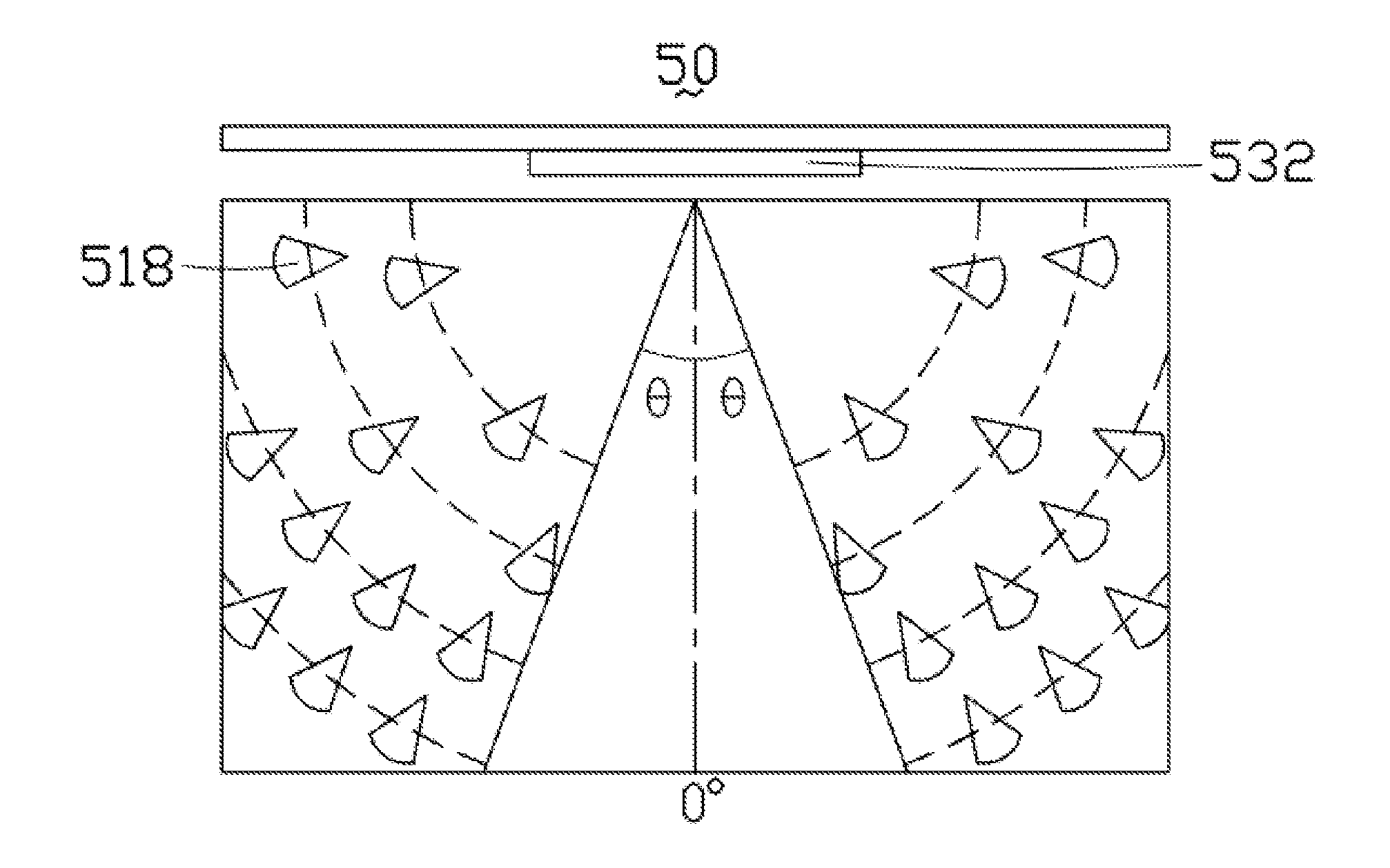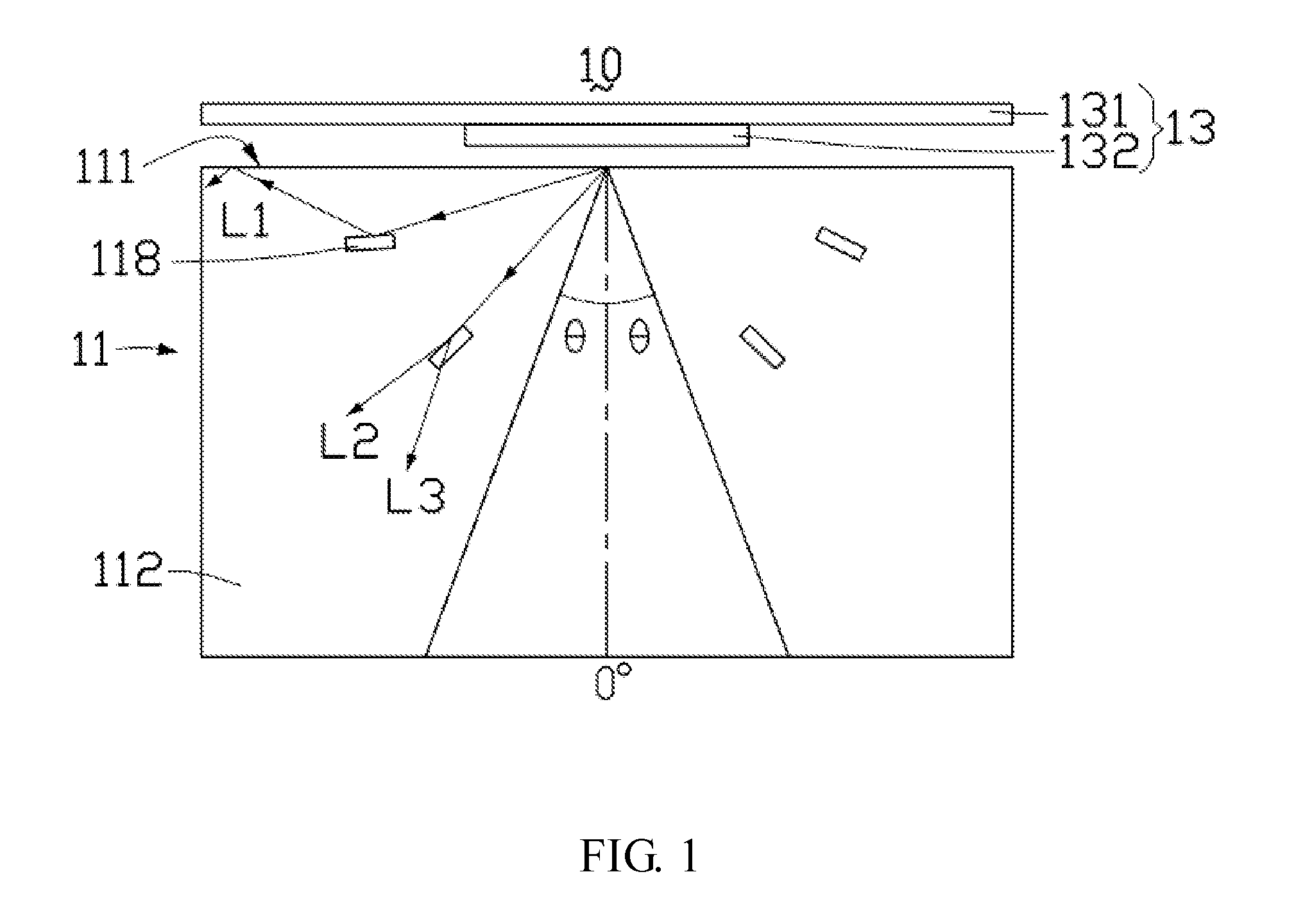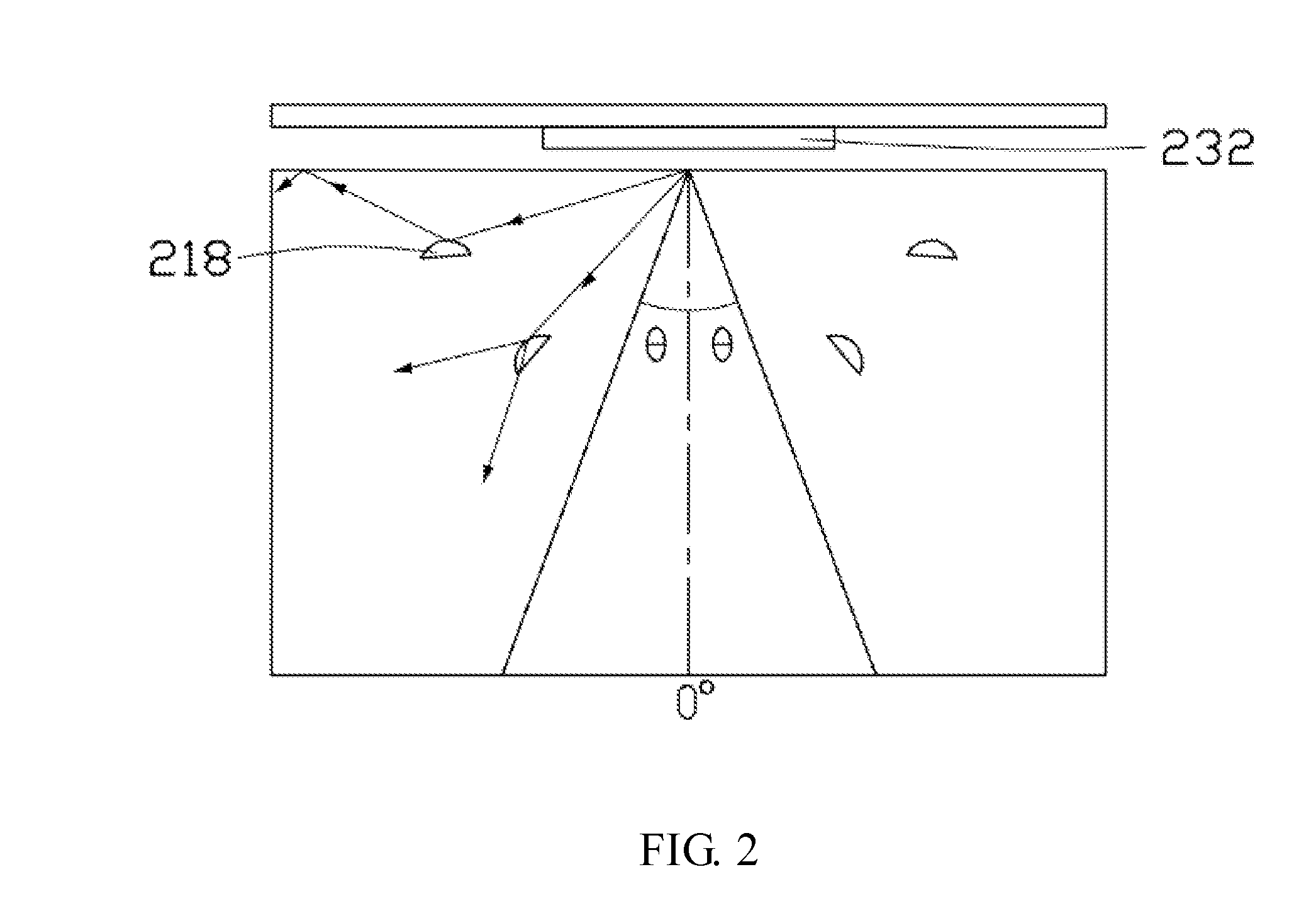Backlight Module and Liquid Crystal Display Device
- Summary
- Abstract
- Description
- Claims
- Application Information
AI Technical Summary
Benefits of technology
Problems solved by technology
Method used
Image
Examples
Embodiment Construction
[0032]Referring to FIG. 1, there is shown a schematic structural view of a first embodiment of a backlight module according to the present disclosure. As shown in FIG. 1, the backlight module 10 comprises a light guide panel 11 and a light source 13 used in conjunction with the light guide panel 11 to provide light rays for illumination. The backlight module 10 may further comprise optical sheets having other functions such as a diffuser sheet, a prism sheet or the like, which will not be further described herein.
[0033]In this embodiment, the light source 13 is an LED bar, including an LED installing bar 131 and one or more LEDs 132. The LEDs 132 are arranged on the LED installing bar 131 regularly at intervals.
[0034]The light guide panel 11 is not limited in shape, and may be made of a transparent material of a rectangular shape, a wedge shape or even an irregular shape. The light guide panel 11 at least comprises a light incident surface 111, a light emergent surface 112 substanti...
PUM
 Login to View More
Login to View More Abstract
Description
Claims
Application Information
 Login to View More
Login to View More - R&D
- Intellectual Property
- Life Sciences
- Materials
- Tech Scout
- Unparalleled Data Quality
- Higher Quality Content
- 60% Fewer Hallucinations
Browse by: Latest US Patents, China's latest patents, Technical Efficacy Thesaurus, Application Domain, Technology Topic, Popular Technical Reports.
© 2025 PatSnap. All rights reserved.Legal|Privacy policy|Modern Slavery Act Transparency Statement|Sitemap|About US| Contact US: help@patsnap.com



